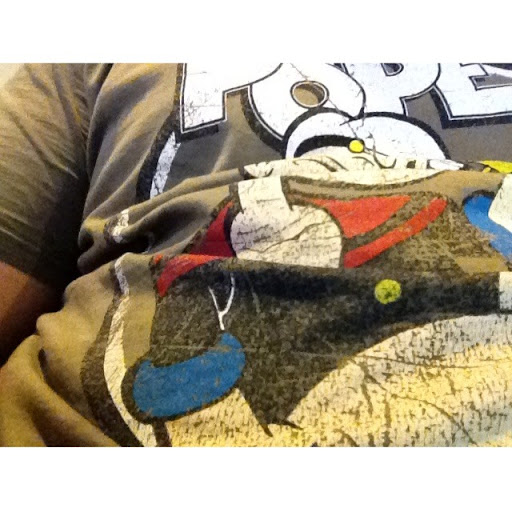Joseph W Pellegrino
age ~61
from West Springfield, MA
- Also known as:
-
- Joe W Pellegrino
- Jose Pellegrino
- Joseph Pellgrino
- Joseph P Ellegrino
- Phone and address:
- 79 Warren St, West Springfield, MA 01089
Joseph Pellegrino Phones & Addresses
- 79 Warren St, West Springfield, MA 01089
- W Springfield, MA
- 115 Sampson St, Bridgeport, CT 06606 • 475 282-9082
- 104 Chestnut St, Bridgeport, CT 06604
- Stratford, CT
Work
-
Company:Atwater studios, inc
-
Address:165 Front Street, Chicopee, MA 01013
-
Phones:413 594-9760
-
Position:Executive officer
-
Industries:Home furnishings
Education
-
Degree:LL.M - Master of Laws
-
School / High School:Boston University School of Law
Ranks
-
Licence:Massachusetts - Active
-
Date:1962
Name / Title
Company / Classification
Phones & Addresses
Executive Officer
Atwater Studios, Inc
Home furnishings
Home furnishings
165 Front Street, Chicopee, MA 01013
President
Sierra Madre Manor Homeowners Association, Inc
Owner, Principal
APPLE ELECTRIC, LLC
Electrical Contractor
Electrical Contractor
58 Youngs Apple Orch, Northford, CT 06472
Principal
HONORE, LLC
Legal Services Office · Legal Services, Nsk
Legal Services Office · Legal Services, Nsk
265 State St, Springfield, MA 01103
P-SQUARED CAPITAL MANAGEMENT LLC
5 Beechcroft Rd, Greenwich, CT 06830
Principal
P-SQUARE INVESTMENTS LLC
Investor
Investor
5 Beechcroft Rd, Greenwich, CT 06830
OHIO HOP GROWERS GUILD
MANKATO FARMS, LLC
Medicine Doctors

Joseph M. Pellegrino
view sourceSpecialties:
Anesthesiology
Work:
Geisinger Medical GroupGeisinger Wyoming Valley Anesthesiology
1000 E Mtn Dr, Wilkes Barre, PA 18711
570 808-7850 (phone)
1000 E Mtn Dr, Wilkes Barre, PA 18711
570 808-7850 (phone)
Languages:
English
Description:
Dr. Pellegrino works in Wilkes-Barre, PA and specializes in Anesthesiology. Dr. Pellegrino is affiliated with Geisinger Wyoming Valley Hospital.

Joseph Michael Pellegrino
view sourceSpecialties:
Anesthesiology
Critical Care Medicine
Critical Care Medicine
Education:
Boston University(2007)
License Records
Joseph C Pellegrino
License #:
RS072871A - Expired
Category:
Real Estate Commission
Type:
Real Estate Salesperson-Standard
Lawyers & Attorneys

Joseph A Pellegrino, Springfield MA - Lawyer
view sourceAddress:
Denner Pellegrino LLP
265 State Street, Springfield, MA 01103
413 746-4400, 413 746-4400 (Office), 413 746-2816 (Fax)
265 State Street, Springfield, MA 01103
413 746-4400, 413 746-4400 (Office), 413 746-2816 (Fax)
Licenses:
Massachusetts - Active 1962
Education:
Boston University School of Law
Degree - LL.M - Master of Laws - Taxation
Graduated - 1978
New England School of Law
Degree - JD - Juris Doctor - Law
Graduated - 1962
Boston College
Degree - BA - Bachelor of Arts - History
Graduated - 1958
Degree - LL.M - Master of Laws - Taxation
Graduated - 1978
New England School of Law
Degree - JD - Juris Doctor - Law
Graduated - 1962
Boston College
Degree - BA - Bachelor of Arts - History
Graduated - 1958
Specialties:
Lawsuits / Disputes - 100%
Associations:
Hampden County Bar Association - Member
Massachusetts Bar Association - Member
Massachusetts Bar Association - Member

Joseph Pellegrino - Lawyer
view sourceOffice:
Denner Pellegrino, LLP
Specialties:
Lawsuits & Disputes
Civil Litigation
Criminal Litigation
Civil Litigation
Criminal Litigation
ISLN:
913611607
Admitted:
1962
University:
Boston College, B.A., 1958; Boston College, B.A., 1958
Law School:
Boston University School of Law, LL.M., 1978; New England School of Law, J.D., 1962

Joseph Pellegrino - Lawyer
Resumes

Joseph Pellegrino
view sourcePosition:
President at P-Squared Capital Management LLC
Location:
Greenwich, Connecticut
Industry:
Financial Services
Work:
P-Squared Capital Management LLC - Greater New York City Area since Jun 2013
President
President

Joseph Pellegrino
view sourceLocation:
United States

Joseph Pellegrino
view sourceLocation:
United States

Joseph Pellegrino
view sourceLocation:
United States

Screenwriter, Filmmaker, Artist
view sourceLocation:
Los Angeles, California
Industry:
Motion Pictures and Film
Work:
Leeding Media - United States Jun 2012 - Sep 2012
Intern
Crystal Sky Pictures - United States Jul 2012 - Aug 2012
Intern, Receptionist
Intern
Crystal Sky Pictures - United States Jul 2012 - Aug 2012
Intern, Receptionist
Education:
The American Film Institute 2011 - 2013
Master of Fine Arts (MFA), Screenwriting The New England Institute of Art 2005 - 2010
Master of Fine Arts (MFA), Screenwriting The New England Institute of Art 2005 - 2010
Interests:
film, writing, music, painting, hiking, weightlifting, running, biographies, plays
Honor & Awards:
Excellence in Screenwriting, 2010

Student At Champlain College
view sourceLocation:
Springfield, Massachusetts Area
Industry:
Marketing and Advertising
Education:
Champlain College 2010 - 2014
Us Patents
-
Photoelectric Propulsion Drive
view source -
US Patent:20060112673, Jun 1, 2006
-
Filed:Nov 26, 2004
-
Appl. No.:10/997657
-
Inventors:Joseph Pellegrino - Sayville NY, US
-
International Classification:F03H 1/00
-
US Classification:060203100
-
Abstract:This invention is a device(s) that will utilize the power of photons to transfer their energy to electrons in turn transferring their energy to another object of mass that the casing(s) of the drive will be connected to by bombarding a wall of a negative electric field. This energy will then be transferred to the object this device(s) is connected to causing it to move in the same direction of the flow of the electrons. In theory the device(s) should cause movement up to ⅓ the speed of light. This will aid NASA any others that need or want to travel the solar system(s) in a more reasonable time frame. The fundamental principal behind the propulsion is the same as the solar sail. When high energy particles hit something, some of their energy is transferred to that object, and when the electrons are hit by photons of high energy, the photons energy is transferred to the electron and then in turn when the electron's energy is then transferred to the wall it hits and whatever it's connected to. I do suggest, though, that this drive be used in outer space and be lifted first from the earth via some other propulsion like a rocket. I do not feel currently it can produce enough “net force” to break away from earth's gravity on it's own.
-
Multiport Selector Valve
view source -
US Patent:52614549, Nov 16, 1993
-
Filed:Nov 30, 1992
-
Appl. No.:7/982960
-
Inventors:James J. Pavlica - East Northport NY
Joseph C. Pellegrino - Baldwin NY -
Assignee:Grumman Aerospace Corporation - Bethpage NY
-
International Classification:F16K 11065
F16K 2502
F16K 320 -
US Classification:13762548
-
Abstract:A multiport selector valve incorporates a polished interface between a respective poppet of each port and a displaceable valve spool. A controlled gap exists between each poppet and its respective port fitting to pressurize a recess in which an O-ring is seated during operation of the valve. This results in the O-ring seal being urged against a confronting surface of the poppet which increases the contact force between optical surfaces of the poppet and the spool, particularly during periods of dynamic flow. The construction of the valve results in a unit of high reliability and useful life with attendant reduction of replacement costs.
Classmates

Joseph Pellegrino
view sourceSchools:
Hamden Hall Country Day Hamden CT 1991-1995
Community:
Kathryn Courtney, Judi Leavitt, Eugene Lisansky, William Slusky

Joseph Pellegrino
view sourceSchools:
Brian Piccolo Elementary School Chicago IL 1941-1945
Community:
Tamie Smith, Jose Otero, Virgen Velez, Angela Davis

Joseph Pellegrino
view sourceSchools:
Oyster Bay High School Oyster Bay NY 1974-1978
Community:
Michael Caramico, Ronald Jamieson, Frank Harris

Joseph Pellegrino
view sourceSchools:
St. Roch's Catholic School Greenwich CT 1964-1968, Muhlenberg Elementary School Allentown PA 1973-1976
Community:
Marvin Hoffman, Rudy Blankenship, Gif Sander

Joseph Pellegrino
view sourceSchools:
Amy at Martin School Philadelphia PA 1993-1997
Community:
Nakia Dorsey, Victor Volpe, Walter Settle

Joseph Pellegrino
view sourceSchools:
Belleville High School Belleville NJ 1995-1999
Community:
Susan Harrington, Joyce Angileri, Robert Migliara, Brenda Bergamotto

Joseph Pellegrino
view sourceSchools:
Amy at Martin School Philadelphia PA 1995-1996
Community:
Jane Lewis, George Ralston, Linda Britt

Joseph Pellegrino
view sourceSchools:
Archbishop Molloy High School Jamaica NY 1997-2001
Community:
James Simms, Cathy Spirio, Robert Santos, Bill Carr
Flickr
Googleplus

Joseph Pellegrino
About:
Spot On Home Inspections
Tagline:
If your buying a house get the report that is spot on.

Joseph Pellegrino

Joseph Pellegrino

Joseph Pellegrino

Joseph Pellegrino

Joseph Pellegrino

Joseph Pellegrino

Joseph Pellegrino
Myspace

Nicky Joseph Pellegrino
view source
Joseph Pellegrino
view source
Joseph Pellegrino
view source
Joseph Pellegrino
view source
Joseph Pellegrino
view source
Joseph Pellegrino
view source
Joseph Pellegrino Jr
view source
Joseph Carmen Pellegrino
view sourceYoutube
Get Report for Joseph W Pellegrino from West Springfield, MA, age ~61













